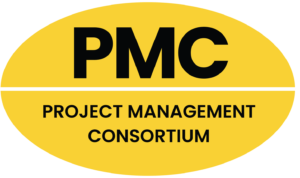
General contractor Stalco Construction and architect, site engineer, and construction manager L.K. McLean Associates’ (LKMA) have completed the new Mastic Beach Ambulance Company (MBAC) headquarters. The new facility is located at 343 Main Street (formerly Neighborhood Road) in Mastic Beach, NY, a village in the Town of Brookhaven in Suffolk County.
“The two-story, 18,000-square foot new headquarters building houses five drive-through vehicle bays, instead of only three one-way bays in the previous facility, allowing for a more efficient emergency response and equipment maintenance operations. In addition, the drive-through design of the bays further improves the efficiency and safety of operations by allowing the Company to respond out of the building onto both Main Street and Diana Drive. The new building accommodates up to 15 vehicles and features more comfortable EMT volunteer housing, equipment storage, and decontamination facilities,” said Stalco Construction’s President, Alan Nahmias.
“In the pre-design phase, the client developed a very specific functional program that had to be accommodated within a set budget. The local political leadership also insisted on the new building’s design being visually attractive and fitting well into the surrounding residential neighborhood. Our project team not only has achieved both the functional and aesthetic requirements, but also has developed a design that cost less to build than the originally planned budget,” said LKMA Associate Christopher F. Dwyer.
The project’s design, construction, and land acquisition were financed through The Brookhaven Town Board–approved $11-million bond resolution in 2016.
The Mastic Beach Ambulance District covers an area of approximately 11.8 square miles, including Fire Island, and stretches from Moriches Inlet to Wavecrest Drive. The MBAC was founded in 1948, as part of the Mastic Beach Fire Department, from which it separated in 1987.
The Company currently has 60 active riding volunteers and approximately 30 life members and associate volunteers who do not actively respond to EMS alarms, but assist the company in other ways. The Company’s leadership consists of a seven-member Board of Directors, three company Chiefs, three Captains, and two administrative officers. All officers and directors are volunteers. Each year of the last ten years, the Company has experienced an average of a 5% increase in call volume, currently totaling approximately 2,600 alarm calls annually.
In addition to Stalco and LKMA, the project team included mechanical, electrical, and plumbing (MEP) engineer Nelson & Pope; and structural engineer TDM Consulting Engineers.
The New Building – Architecture and Functionality
The new, two-story structure totals 18,000 square feet. It is located on a 1.2-acre site that includes new access driveways, an 18,000-square foot parking lot, green areas landscaped with low-maintenance grass and shrubs, exterior lighting, a flag pole, and signage. Construction crews installed new drainage and sanitary systems, and build new water and electrical connections to the building.
“The LKMA architectural and engineering team designed the new building based on the input from the Ambulance Company leadership and volunteers. The design focused on the safety and comfort of the personnel and the public, and conforms to the recently adopted International Building Codes of New York State for life safety, mechanical, electrical, plumbing, and fire protection systems,” explained LKMA Senior Architect Joseph M. Catropa, AIA.
The Company hosts a vibrant youth squad, monthly training sessions for members, and a variety of public classes, including first aid, mental health first aid, and CPR. The new facility allows it to greatly expand interactions with the public and to become a hub for public safety in the community.
“The new headquarters was constructed as a steel-frame structure erected on a 12,000-square foot concrete slab-on-grade foundation. Both the architectural design elements and exterior materials – HardieShingle cementitious board siding, cultured stone accents, a second floor porch, a partial hip roof with fiberglass shingles, gables, and single-family home-style windows and doors – reflect the residential character of the neighborhood, preserving its architectural consistency,” added Stalco Vice President Joseph M. Serpe. “The second floor structure is steel bar joists, metal floor decking, and poured-concrete floor. The roof structure is steel framing with a metal deck.”
Despite its stylistic residential references, the design incorporates only non-combustible materials, such as light-gauge metal exterior and interior wall systems with fire-rated gypsum board walls, concrete floors, steel internal stairs, fiber-reinforced plastic (FRP) exterior doors, and insulated steel doors. Complying with the current New York State building codes, the structure was designed to meet environmental efficiency requirements similar to those of the LEED system, although the building did not apply for the official LEED certification. The entire new facility is accessible and fully ADA-compliant.
“The interior finishes, selected for longevity and low maintenance, include conventional materials such as epoxy sealant-finished concrete floors, painted gypsum walls, and vinyl composite tile (VCT) and porcelain tile flooring,” said Stalco’s Construction Superintendent Michael Marchese.
The 11,902-square foot first floor houses a large apparatus bay with adjacent decontamination, oxygen storage, and washer and dryer rooms; medical supplies storage room; locker room; bunk rooms; offices; lounge; and restrooms. This floor also houses an elevator and three stairs connecting to the building’s second floor.
“The primary functional space of the new facility is the large, 5,764-square foot, five-bay apparatus garage than can accommodate 15 vehicles,” explained Stalco’s Assistant Project Manager Ian Stanton. “The former home of the MBAC had only a three-bay garage capable of housing three vehicles, which had to be backed into the garage. The drive-through bays afford the personnel the ability to drive ambulances responding to emergency calls from both sides of the building. They also eliminate the need to back vehicles into a garage, a potentially dangerous procedure that is prone to causing both property damage and risk to personnel due to the limited sight lines in an ambulance,” he added.
The storage rooms provide ample space to house medical equipment and restock supplies for ambulances, with easy access off of the apparatus room. The locker area provides a location for volunteer and paid staff to store equipment used for response on site. EMS personnel are required to wear a variety of safety gear including boots, safety jackets, and vests as well as personal medical equipment such as stethoscopes. Having locker space in the new facility allows staff to keep potentially contaminated articles out of their personal vehicles and homes, increasing their safety and the safety of their families. The MBAC’s former facility provided no room for such amenities, which increased the risk of spreading contamination.
The bunk rooms and restrooms with showers are located on the west side of the first floor. They are used by on-duty volunteer crews who sleep or rest in the building while awaiting the alarm. During many standby events, volunteers are required to stay in-house for extended periods of time, necessitating sleeping facilities. It is important to keep required staff on hand and well rested any time that travel is excessively dangerous or restricted, such as during hurricanes or large winter storms.
One example of these circumstances was during the landfall of Superstorm Sandy in 2012. The MBAC needed to keep four complete ambulance crews in-house during this storm, and at its present facility this meant people were sleeping on air mattresses and floors. During the Sandy event, the Company had all of its apparatus out responding to EMS alarms, assisting with evacuations, and providing rehabilitation for the Mastic Beach Fire Department during their response to multiple working structure fires. It responded to at least 36 separate calls for medical assistance in the first 24 hours after Sandy made landfall. Having proper sleeping facilities reduces strain and provides adequate rest for the volunteers and staff during future large-scale emergencies.
The 563-square foot lounge and two offices totaling 400 square feet occupy the north side of the floor. The lounge is the primary room were standby crews are housed while awaiting alarm calls. The ground floor offices provide locations for staff files, employee time clocks, member mailboxes, and other administrative uses. The lounge is outfitted like a typical employee break room area, with a small refrigerator, microwave, etc. During past power outages and major emergencies, the Company has made its current lounge available to the public, so that they could charge electronics and take advantage of the facility’s backup generator.
The 6,006-square foot second floor houses a lobby, a large training room, chiefs’ and captains’ offices, an administrative staff desk, a boardroom, restrooms, and an outdoor patio.
The most important space of the second floor is the 1,522-square foot training room on the south side. This room is used to provide classes both internally to volunteer EMS workers and to the public. The default configuration for this room is for one half to be set up as a classroom for training new EMTs, providing department trainings and to continue the practice of bringing valuable trainings to the public. The other half is a practical skills classroom where EMT students, youth squad and members of the public can learn life-saving skills such as CPR. The room features a movable wall that allows for different configurations and size options.
The north side of the second floor houses the offices and boardroom. The offices include space to house medical records as well as work spaces for the leadership that runs the day-to-day operations of the MBAC. The lobby of the second floor houses restrooms and a full-size kitchen to serve hosted events, training sessions, and, potentially, evacuated residents in emergency situations.
The apparatus bay section of the building does not have a second floor, which allowed the designers to create an additional outdoor space on its roof. The property this building is located on doesn’t have a large amount of space available for outdoor activities, so for little cost the designers created space out on the roof with secondary egress provided by the stair on the east side.
Stalco Construction, Inc.
Headquartered in Islandia, NY, with a regional office in New York City, Stalco Construction, Inc. is a full-service general contracting and construction management firm active in the Greater New York area and on Long Island. Building Design & Construction magazine recently ranked Stalco as the 148th largest general contractor and the 50th largest construction manager in the United States. Engineering News-Record New York magazine ranks Stalco as the 47th largest construction firm in the New York/New Jersey/Connecticut Tri-state area.
Established in 1992, the firm builds facilities for commercial and institutional clients in the educational, healthcare, retail, office, governmental, entertainment, industrial, research/laboratory, and worship markets. The value of the firm’s on-going ground-up, interior, and capital improvement projects totals approximately $100 million.
Since the firm’s inception, its leadership and employees have been involved in supporting the local community through responsible corporate citizenship and charity work. The company’s principals, Kevin G. Harney and Alan Nahmias, co-founded Contractors For Kids (CFK), a not-for-profit organization supported by nearly 300 Long Island-based construction and real estate organizations. CFK provides assistance to children and their families impacted by health-related crisis.
Stalco’s current and recent work includes the $24-million renovation of the Vaughn College of Aeronautics and Technology in Queens, NY; the $8.4-million Asphalt Green Battery Park City recreational center and the $15-million restoration of the landmark Pier A in Manhattan; the $24-million Emergency Department at the Lincoln Medical and Mental Health Center in the Bronx; the $1.4-million Home Fair store at the Atlas Park Mall in Queens NY; the Ultra Diamonds and Liebeskind Berlin stores in Riverhead, NY; two Lush Fresh Handmade Cosmetics stores in Manhattan; and the on-call construction management contract for the 780,000-square foot One CA Plaza office complex in Islandia, NY.
L.K. McLean Associates
L.K. McLean Associates (LKMA) is a 90-person professional engineering, land surveying, and architectural design firm based in Brookhaven NY. LKMA’s personnel include more than 20 licensed professional engineers, land surveyors, architects, and landscape architects. The firm serves both governmental and private clients.
LKMA was founded in 1950 in Wantagh in Nassau County by Louis K. McLean, a professional engineer and land surveyor, with focus on the surveying and mapping of residential subdivisions at a time when U.S. servicemen had returned from World War II and were starting families. Surveying and mapping remain a mainstay of the firm today. In the late 1950s, McLean relocated the firm to Patchogue in Suffolk County and became the de-facto Town Engineer for Brookhaven Town. In 1982, the firm relocated to its present location in Brookhaven.
The firm began working for the Suffolk County Department of Public Works in the 1960s, beginning a long-standing relationship, which continues to this day. LKMA was the designer for several County roads as part of DPW’s major highway construction expansion in the 1960s and 1970s. In the 1990s, under the direction of Gene Daly and Ray DiBiase, the company added major new clients, including the New York State Department of Transportation and the Port Authority of NY and NJ.






























